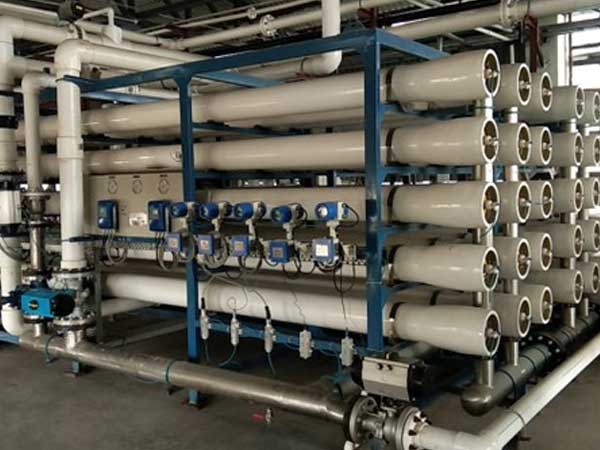GST No: 27AABFQ1046P1Z0

An industrial RO plant is a large-scale water treatment system that uses the reverse osmosis process to treat water for various industrial applications. Industrial RO plants are designed to produce high-quality water at a large volume and are used in industries such as power generation, food and beverage, pharmaceuticals, and electronics manufacturing.
The design of the RO plant depends upon feed water quality, desired output quality, and the flow rate required. Industrial RO plants are highly effective in producing high-quality water at a large volume, but they require careful monitoring and maintenance to ensure that the system operates efficiently and effectively. Regular cleaning and replacement of the RO membrane are necessary to maintain the plant's performance and extend its lifespan.
We at Quaaalirich are particular about the selection of the key elements such as the pressure pump, RO membrane, pretreatment methods to make it full-proof and also post-treatment methods to adjust PH, disinfect etc:
Pretreatment:
Industrial RO plants typically require extensive pretreatment to remove suspended solids, organic matter, and other impurities from the feedwater. Pretreatment may involve various filtration technologies, such as sand filters, multimedia filters, activated carbon filters, or ultrafiltration.
High-Pressure Pump:
The pretreated water is then pumped at high pressure through the RO membrane using a high-pressure pump. The pump provides the necessary pressure to overcome the osmotic pressure of the feedwater and force the water molecules through the membrane.
RO Membrane:
The RO membrane is the heart of the industrial RO plant. It is a semipermeable membrane that allows water molecules to pass through while rejecting dissolved solids, minerals, and other impurities. The RO membrane is available in different types and configurations, such as spiral-wound, hollow fiber, and plate-and-frame.
Membrane Housing:
The RO membrane is housed in a membrane housing that protects the membrane from damage and provides the necessary space for the water to pass through the membrane.
Permeate and Concentrate:
The purified water that passes through the RO membrane is called permeate, while the impurities and contaminants that are rejected by the membrane are called concentrate or reject. The concentrate is discharged as waste, while the permeate is collected for further treatment or use.
Post Treatment:
The permeate from the RO process may undergo post-treatment, such as pH adjustment, disinfection, or polishing, to further improve its quality.
Industrial RO plants are highly effective in producing high-quality water at a large volume, but they require careful monitoring and maintenance to ensure that the system operates efficiently and effectively. Regular cleaning and replacement of the RO membrane are necessary to maintain the plant's performance and extend its lifespan.